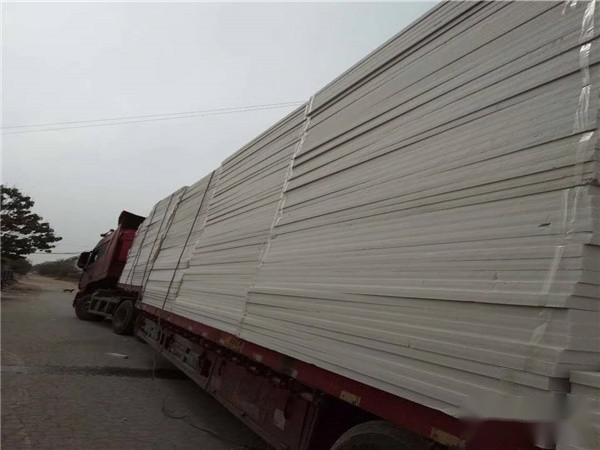XinxiangXPS Foam Board Wholesale Manufacturer
When selecting XPS foam boards, it is essential to understand the function of this product and the benefits it can bring us, as well as its characteristics. As a seasoned XPS foam board manufacturer, let me introduce you to the three main characteristics of XPS foam boards, hoping to deepen your understanding of it! First: Low thermal conductivity. To achieve the same insulation effect, XPS can be thinner than EPS. Second: Low water absorption. Under long-term high humidity or immersion conditions, it can still maintain its excellent thermal insulation performance. Data shows that at 70% humidity over 2 years, the thermal resistance retention rate of XPS exceeds 80%, while EPS is only 20%. Therefore, XPS is suitable for use in damp areas, close to outdoor ground, or in positions below ±0. Third: High compressive strength and tensile strength. XPS is suitable for areas prone to external force impacts. If the surface is treated properly, the tensile bond strength between XPS and polymer cement mortar may be even higher, making the connection between the external insulation system and structural walls safer. Thus, it can also be considered for use in areas with particularly high wind loads.

China's energy consumption in construction projects accounts for a large proportion, and with the development and advancement of scientific and technological levels, energy-saving foam boards have emerged. The application of foam boards in construction projects can be said to be a good helper for energy conservation and emission reduction, as it can significantly reduce the urban "heat island effect." Let's take a closer look! The thermal insulation system of foam boards is mainly divided into: internal insulation thermal insulation system and external insulation thermal insulation system. The internal insulation thermal insulation system: mainly involves creating an insulation layer inside the external wall structure. Its advantages include fast construction progress and flexible operation, particularly advantageous in thermal insulation construction for high-rise buildings. The external insulation thermal insulation system: involves creating an insulation layer on the outside of the external wall structure. It consists of a bonding layer, insulation layer, connectors, a thin plaster reinforcing protective layer, and a finishing layer.

The thermal insulation system of foam boards has very obvious advantages. The insulation layer is located on the outside of the building's envelope structure, reducing stress and stress accumulation caused by structural deformation due to external temperature changes, avoiding structural damage caused by rain, snow, freezing, and cycles of wet heat and dryness. It also reduces the erosion of harmful gases and substances from the outside on the structure, protecting the main structure and effectively improving its durability. Therefore, buildings using foam board systems have good thermal stability, warmth in winter, and coolness in summer, making them increasingly popular. Moreover, they can enhance and improve the waterproof and air-tightness of walls, preventing the occurrence of condensation inside the walls. Foam boards are very common energy-saving building materials, due to their impermeability, thermal insulation performance, fire resistance, waterproof performance, and other excellent properties, they have a wide range of applications, especially playing a crucial role in transportation facilities. Now, let’s discuss the role of foam boards in transportation facilities. Foam boards can be used in highways and bridges, laying the foundation and bridge surface. They are lightweight and waterproof. By placing foam boards on permeable particles and then placing concrete slabs on top as a protective layer, the road surface laid with foam boards can withstand collapses better than surfaces without foam boards, thereby extending the service life of the highway.

Moreover, the road paved with foam board insulation materials has other advantages: its cost is lower compared to other materials. Secondly, foam boards are lightweight and waterproof, and using foam boards on bridge surfaces can significantly reduce the settlement rate. Therefore, compared to bridge surfaces without foam boards, maintenance and supervision can be minimized, reducing certain human and material resources, saving costs, and ensuring safety, which is the main reason for the widespread application of foam boards in transportation. XPS foam boards are insulation materials with excellent performance, and according to relevant data, the demand for XPS foam boards in the market is quite large, even causing a supply shortage at times. This phenomenon reflects the excellent performance of XPS foam boards. So, what advantages do XPS foam boards have? Below, the foam board manufacturer will introduce this issue.

Good thermal insulation performance: XPS foam boards have strong thermal insulation performance due to the special structure of the material, which has a relatively high closed cell ratio. A better closed cell ratio effectively reduces the occurrence of convective heat transfer, resulting in excellent thermal insulation effects. Excellent high compressive resistance: Due to the special structure of XPS foam boards, they have extremely high compressive strength and strong impact resistance. Depending on the different models and thicknesses of XPS foam boards, the compressive strength can exceed 150–700 Kpa, allowing them to withstand ground loads for various systems. They are widely used in geothermal engineering, airport runways, highways, underfloor heating, plaza surfaces, large cold storage, and vehicle interior insulation, among other fields. Lightweight: XPS foam boards are relatively lightweight, which effectively reduces the load-bearing capacity of walls and facilitates cutting and transportation, making installation very convenient. Superior environmental performance: XPS foam boards have stable chemical properties, do not emit harmful substances, are harmless to humans, and the raw materials used are environmentally friendly, producing no industrial pollution. This also makes them a highly recognized new type of environmentally friendly building material. Therefore, the advantages of XPS foam boards are very obvious, and it is precisely because of these advantages that this environmentally friendly material has continuously gained the trust of consumers.












